Windows 10 How To Change Dns

When you sign up for an cyberspace service provider (ISP), they assign you to a DNS server of their cosmos. This office makes it possible for you to access all your favorite sites and services without manually typing their IP address. Unfortunately, nonetheless, non all DNS servers are created equal. There are several reasons you may desire to change DNS in Windows 10, only it's necessary to learn what they are and how they work so you tin brand an informed decision.
What is a DNS server?
And so, what exactly does DNS server mean, and why do you need one? DNS stands for Domain Name System, with the "Domain" referring to the URLs you type in your browser. Most of us take these for granted – nosotros type in the website's name and it automatically takes us to where we expect.
Behind the scenes, however, there is a Domain Proper name System server that turns the URL you blazon into a format that your estimator can understand – an IP accost. Theoretically, the faster this procedure is performed the lower your latency volition be and the faster your browser volition be able to fetch pages for yous.
Why change DNS in Windows 10?
As mentioned before, not all DNS servers are created equal. A DNS server is a server like any other, meaning it can get down or experience mediocre functioning. Information technology will likewise exist faster the closer it is to your location. If your Isp has not properly invested in its infrastructure, its DNS service could cause problems with latency or an inability to load websites.
In that location's also the outcome of privacy and censorship. Depending on your location, your ISP may retain logs of your DNS queries, which acts as a list of every website yous've ever visited. In some countries, they then share this data with government agencies as a form of mass surveillance. Some ISPs fifty-fifty deliver advertisements when you enter a URL that doesn't exist.
And so, should you change your DNS server? Probably not. Equally Lifehacker explains, in nigh cases your ISP'southward DNS server will result in a faster feel. This is considering nigh major websites these days use something called a Content Delivery Network (CDN) to serve content to you. CDNs fetch data from their closest available server to your location. Alternate, public DNS servers may not be as shut as your Internet access provider'south. They could, for instance, only be in the nearest major city. As a result, the website may deliver its data to you from that urban center. The result? Potentially, slower download speeds.
So, then, information technology comes down to this – you should probably only change your DNS server if you're concerned well-nigh your privacy or you lot're experiencing issues with your Isp's. Usually, we're talking most a few milliseconds difference in latency. That said, it doesn't hurt to experiment. Y'all tin can always change it back later on.
What are the best DNS servers
The all-time DNS server typically depends on where you are. Yandex DNS, for example, is Russia-based and therefore has poor performance in the United States. That said, there are some DNS providers who accept excellent coverage across the globe. Co-ordinate to site DNSPerf, these are the fastest complimentary public DNS' worldwide (from fastest to slowest).
- Cloudflare DNS (1.ane.1.1, 1.0.0.1)
- NextDNS (45.90.28.42, 45.90.thirty.42)
- Neustar DNS (64.vi.64.vi, 64.6.65.6)
- Google DNS (8.eight.8.eight, eight.8.four.4)
This, of grade, could change depending on the part of the globe you live in, and so information technology'south worth checking for yourself. Cloudflare, all the same, is well-known, has first-class infrastructure across the earth, and is private. As a result, below we're going to focus on how to alter your DNS to Cloudflare in Windows 10. Google DNS servers are another expert choice if yous're in us.
How to alter DNS settings in Windows x via the Control Console
Changing your DNS servers through the Control Console can be faster and less disruptive than Microsoft's congenital-in settings app. Here's how you lot tin do information technology:
- Open up Command Panel
Press "Start" and and then type "Control Console". Click the top event.

- Click 'Network and Net'
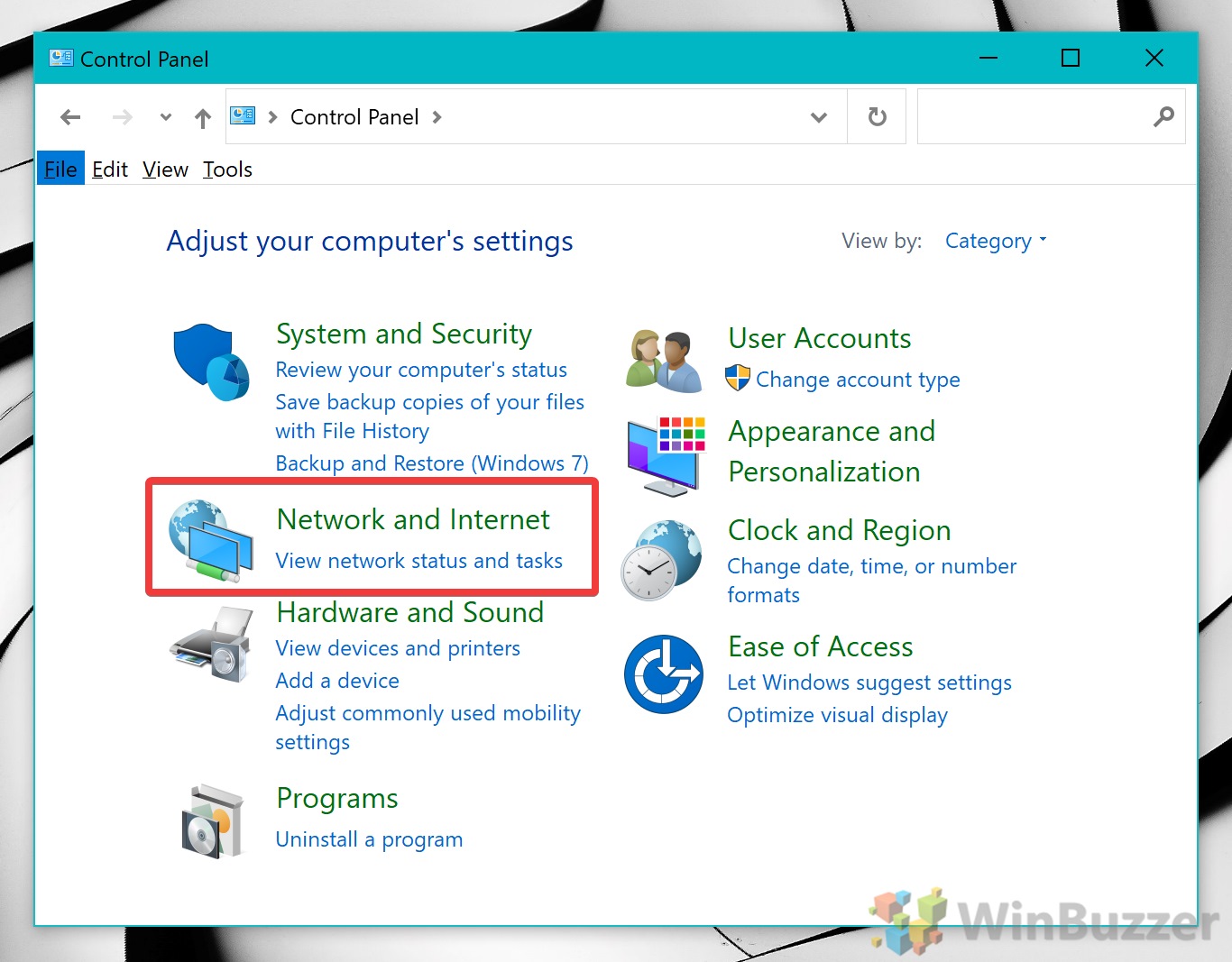
- Press 'Network and Sharing Eye'
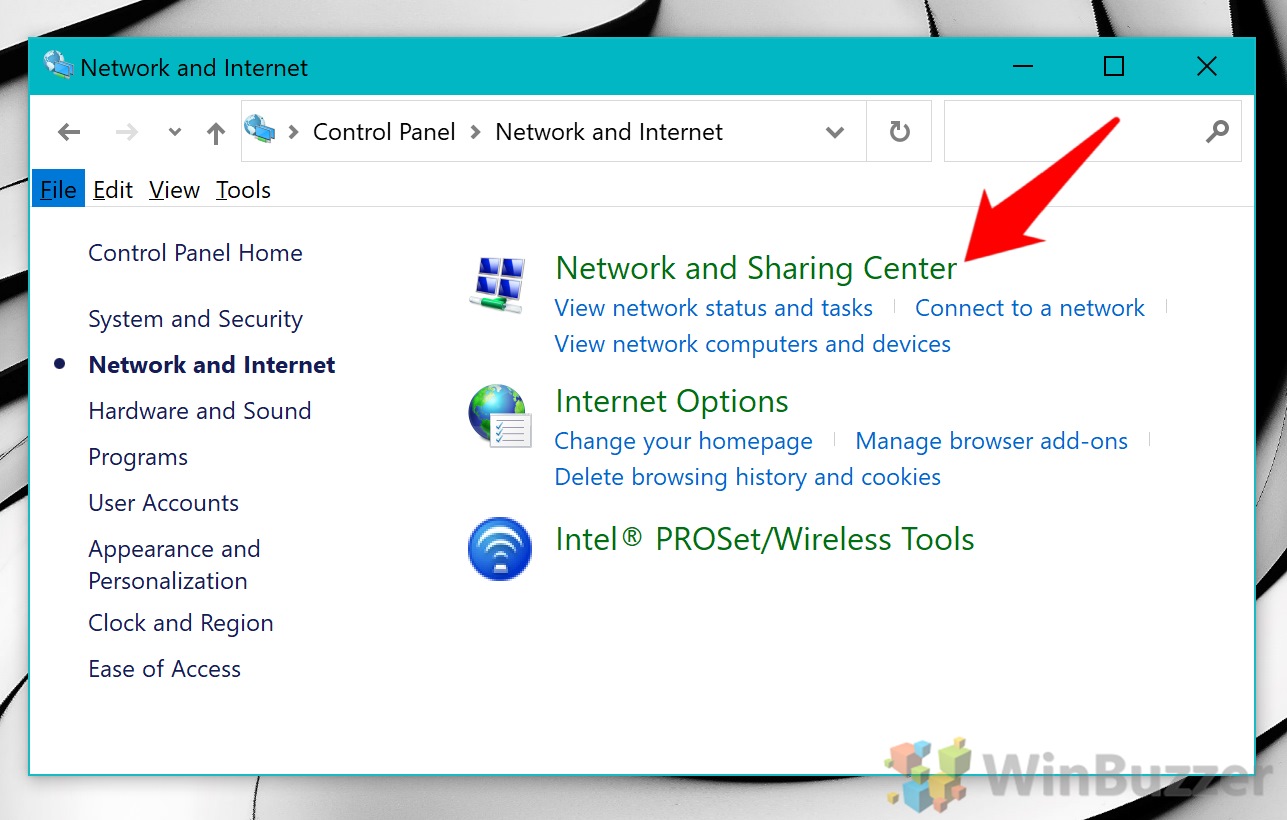
- Click 'Change adapter settings' in the sidebar

- Open your network properties
Right-click on the network y'all're using, which will be under your Wi-Fi or ethernet adapter. At the bottom of the context menu, click "Properties".

- Open IPv4 properties
In the networking tab, look for "Internet Protocol Version 4 (TCP/IPv4)". Click it, then press "Properties" underneath the option window.

- Configure your DNS settings
In the "General" tab, tick "Use the following DNS server addresses" and enter the addresses you chose above. In our case, we're using Cloudflare, so the numbers should exist 1.1.one.1 for the preferred DNS server and 1.0.0.1 for the alternating DNS server.
Once yous're done printing "OK". The changes will apply immediately. You can verify that past visiting this folio and clicking "What's My DNS Server?".
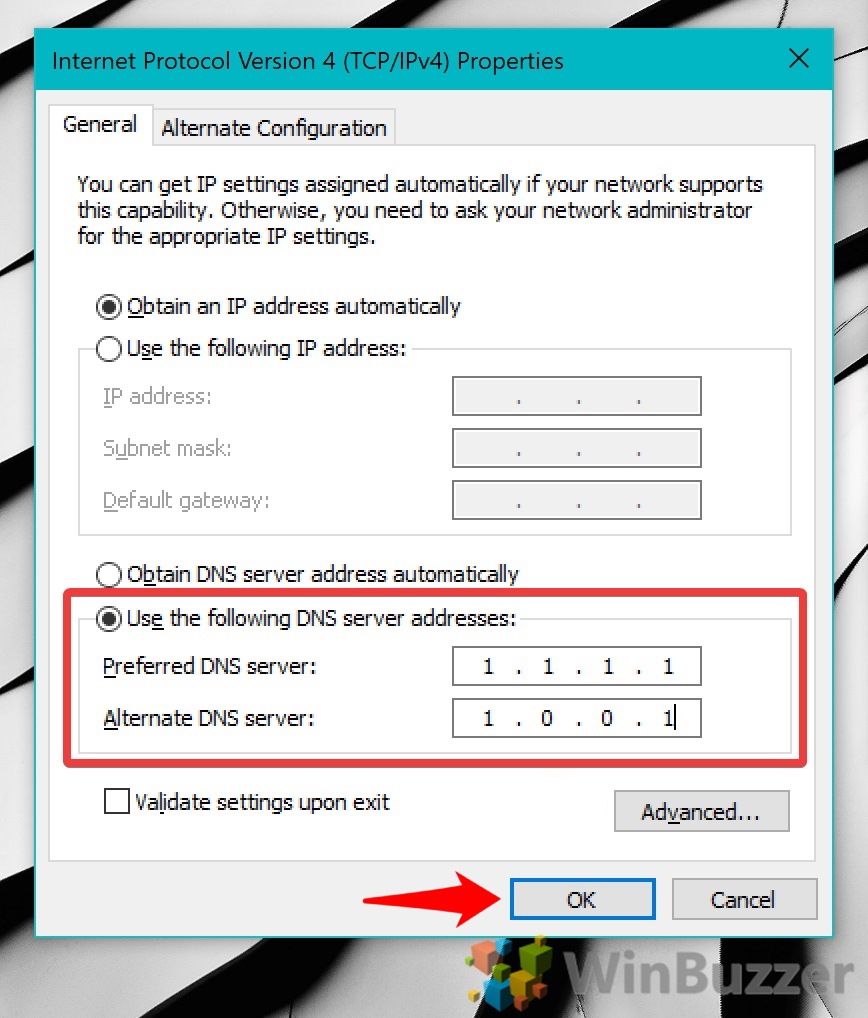
How to Alter DNS on Windows 10 via Settings
In later Windows ten versions, you tin also alter DNS settings via the Settings app.
- Open Settings
Printing the "Start" button, then click the settings cog, above the power push button. Alternatively, printing Windows + I.
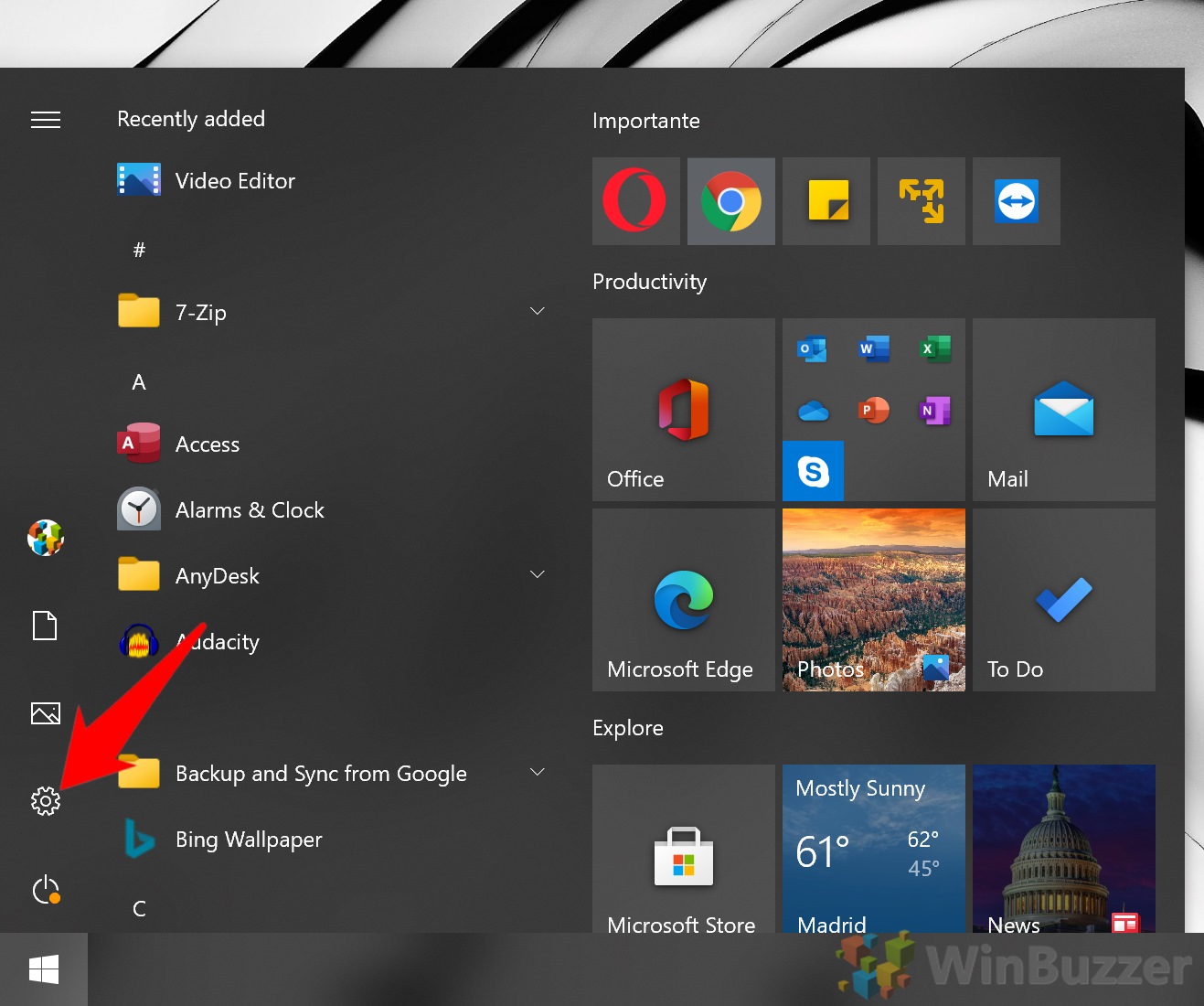
- Click 'Network & Cyberspace'
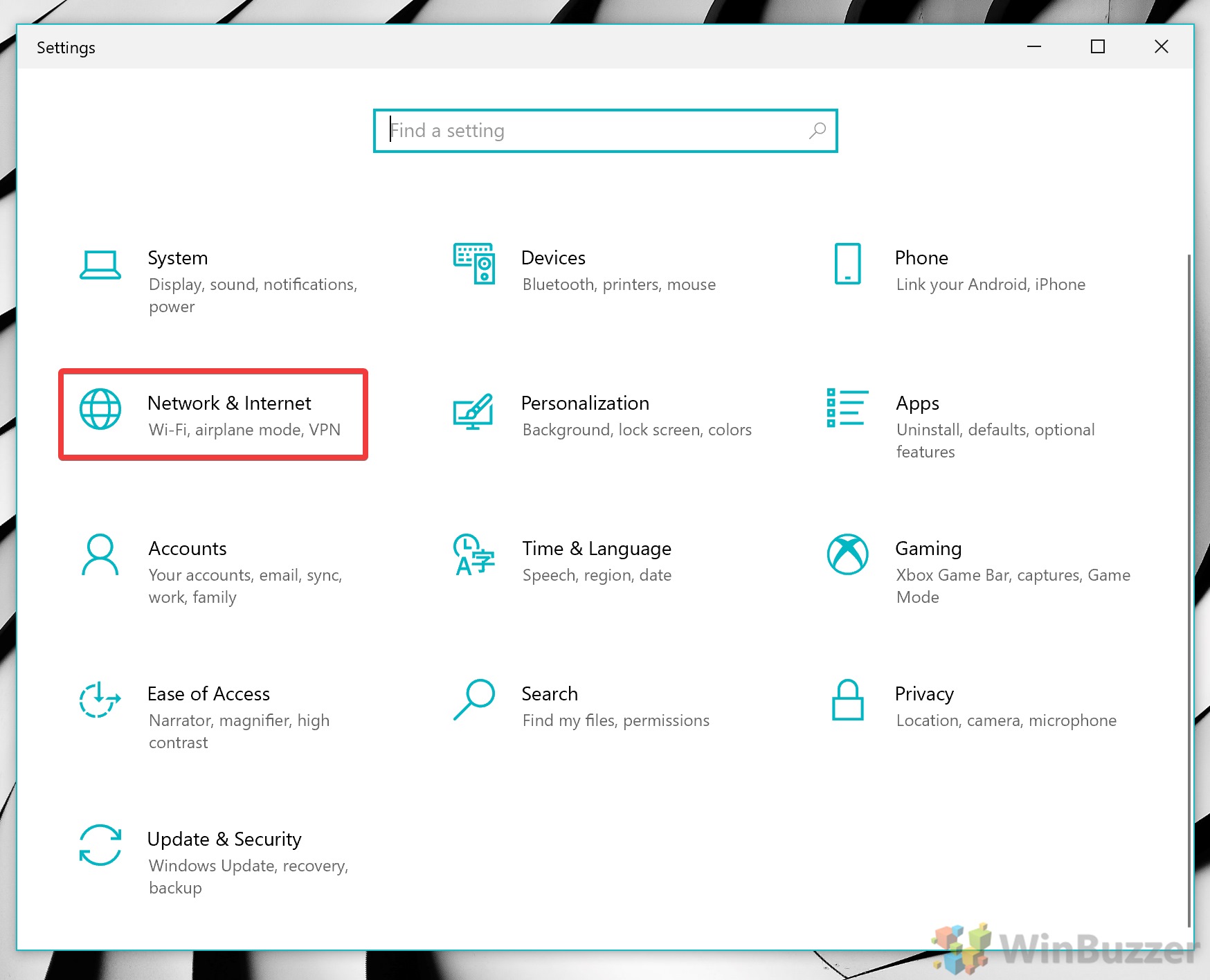
- Open your Wi-Fi/Ethernet settings
If you're on Wi-Fi, click the "Wi-Fi" heading in the sidebar, then click your network in the master pane.
If you're using a wired, ethernet connection, instead click "Ethernet" and the "Properties".
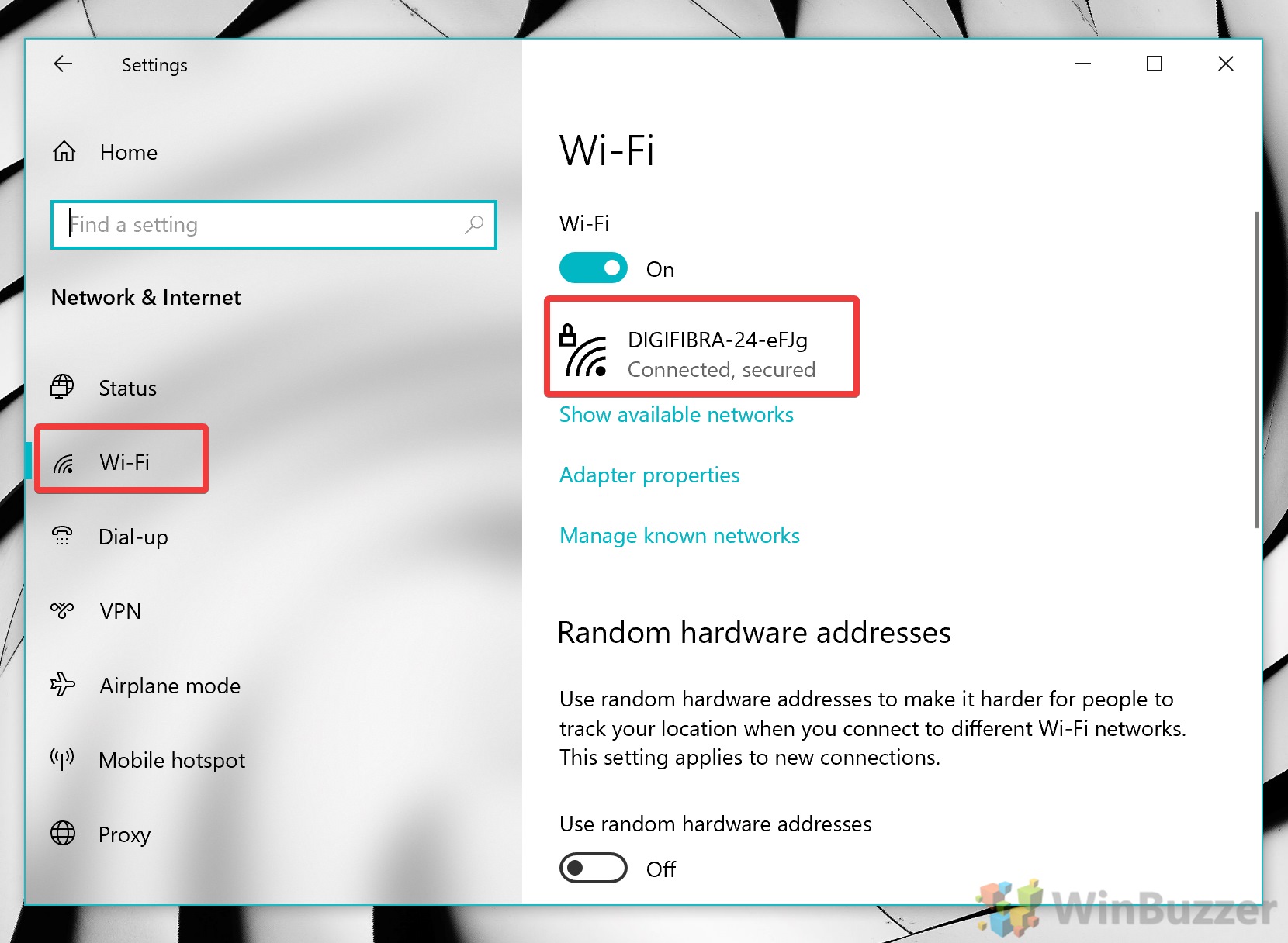
- Edit your Network IP settings
Under the "Network IP settings" header, click "Edit".
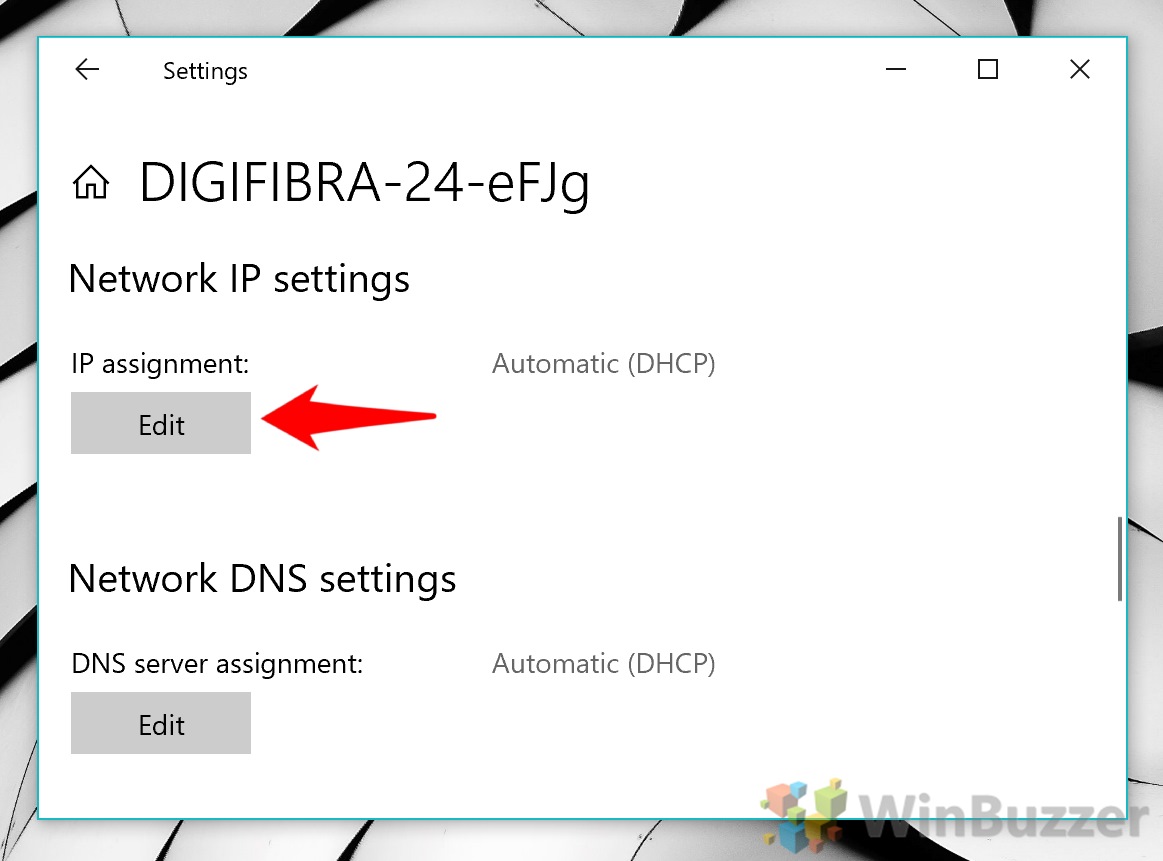
- Select 'Transmission' from the dropdown
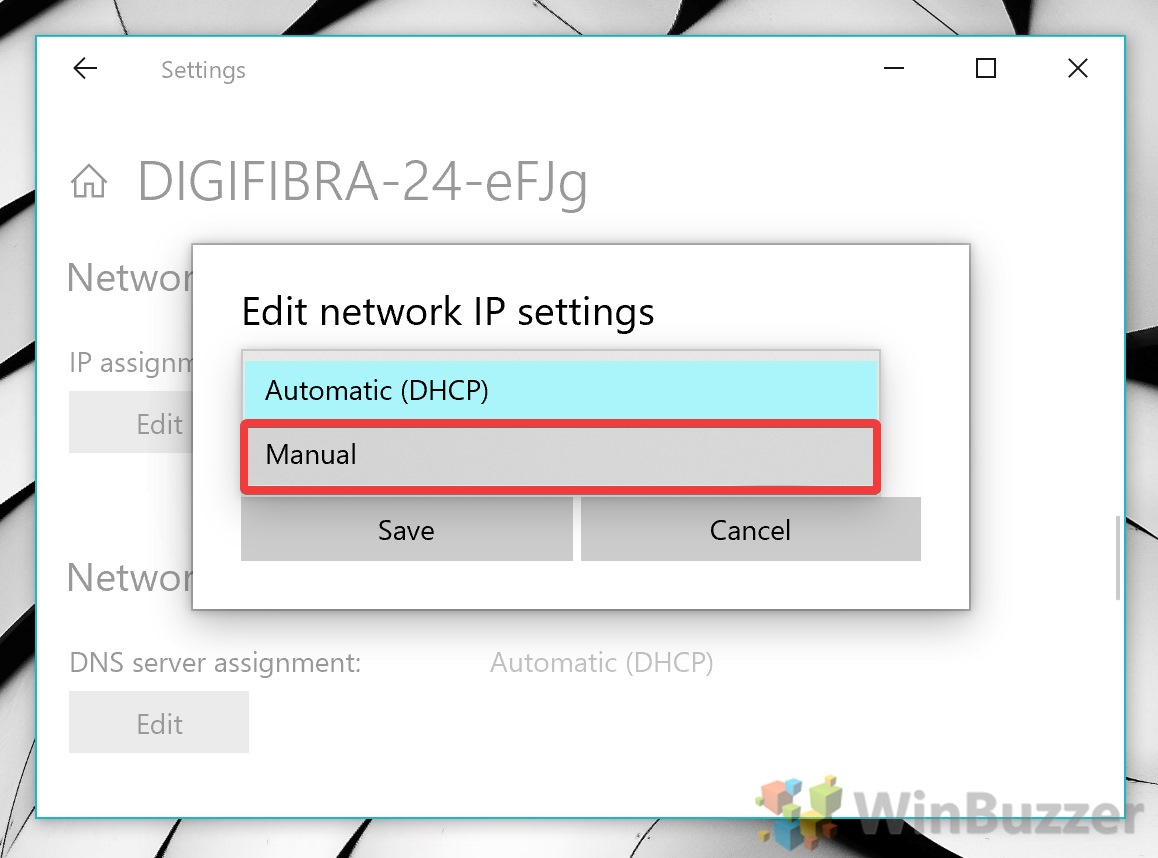
- Perform your DNS configuration
Tick toggle "IPv4" to "On"and enter your chosen DNS servers in the "Preferred DNS" and "Alternate DNS" boxes. If you chose Cloudflare, this will be "i.1.1.1" and "1.0.0.i". There's no need to fill in any of the other information, so you lot tin can only press "Save" once you're done.
The changes will apply immediately. Yous can verify that by visiting this folio and clicking "What'south My DNS Server?".
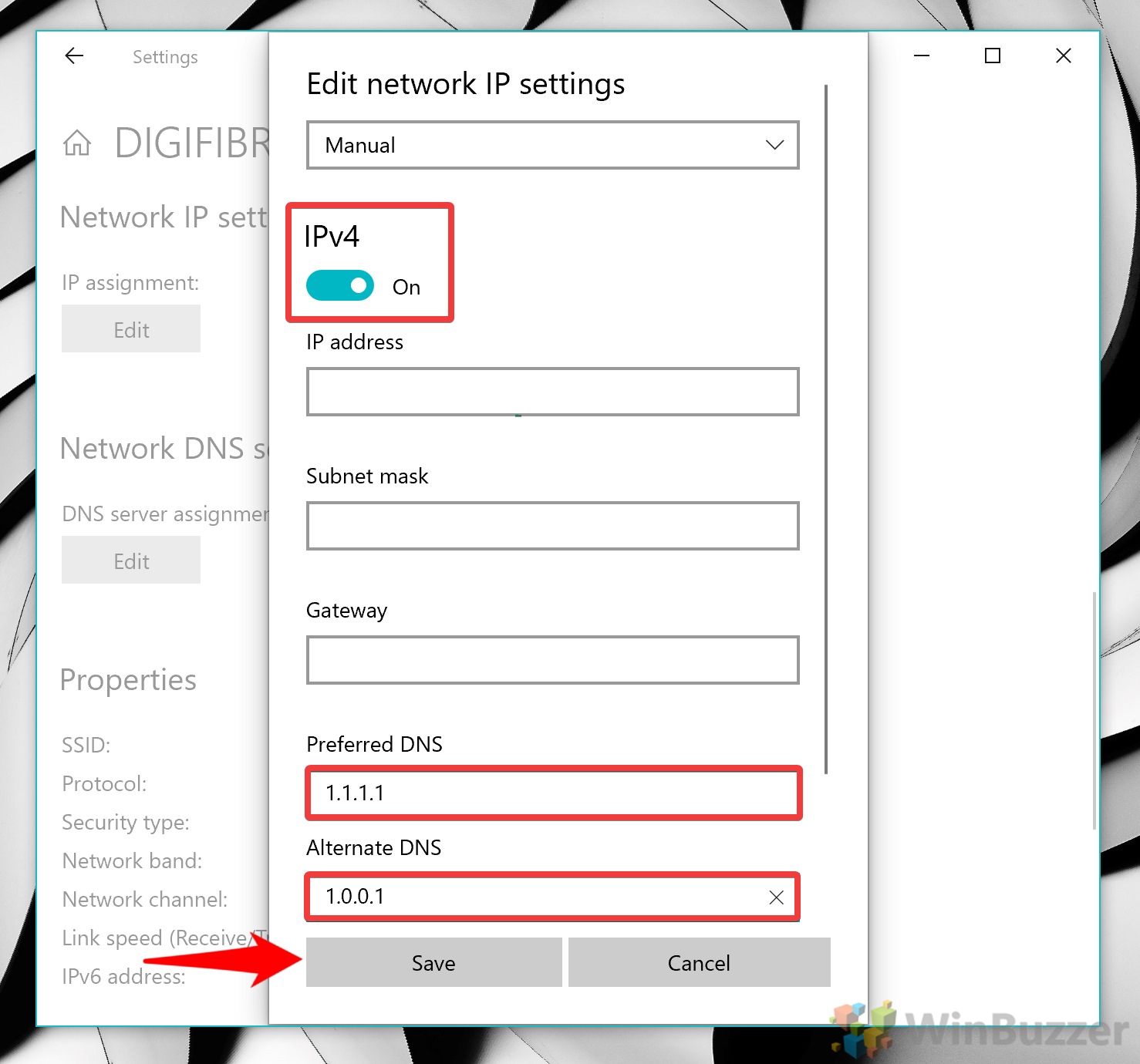
How to change DNS in Windows 10 with DNS CMD Commands
If you don't have access to the GUI or just adopt to fix your DNS via command-line, you can do and so via Control Prompt:
- Open Command Prompt as an ambassador
Press "Start" and and so type "Command Prompt". Click "Run as ambassador" on the correct-mitt side.
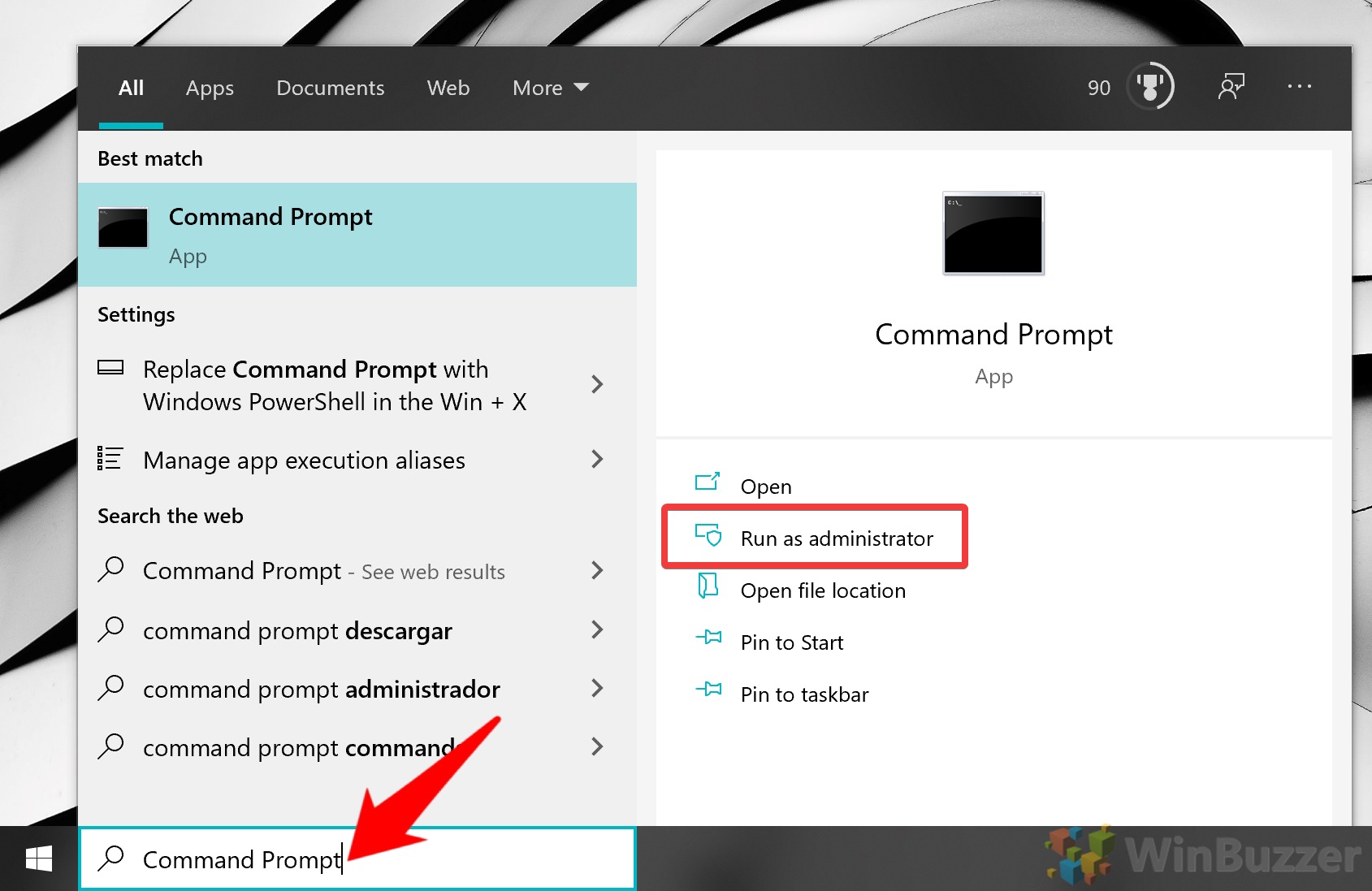
- Enter the DNS CMD commands
Start, we need to find the name our network adapter. You tin do so by entering:netsh interface show interface
Discover your network in the list. Now, to change your primaryy DNS in Windows 10, enter the following, substituting "Wi-Fi" to the proper noun of your network adapter and "1.one.one.1" for the primary DNS server you chose earlier.
interface IP set dns proper noun="Wi-Fi" source ="static" address="1.1.1.1"
Do the same for your secondary DNS server and its address by adding
index=2to the stop of your command:interface IP set dns name="Wi-Fi" source ="static" accost="1.0.0.1" index=ii
That's it. The changes will utilize immediately. You lot tin verify that by visiting this page and clicking "What'south My DNS Server?".
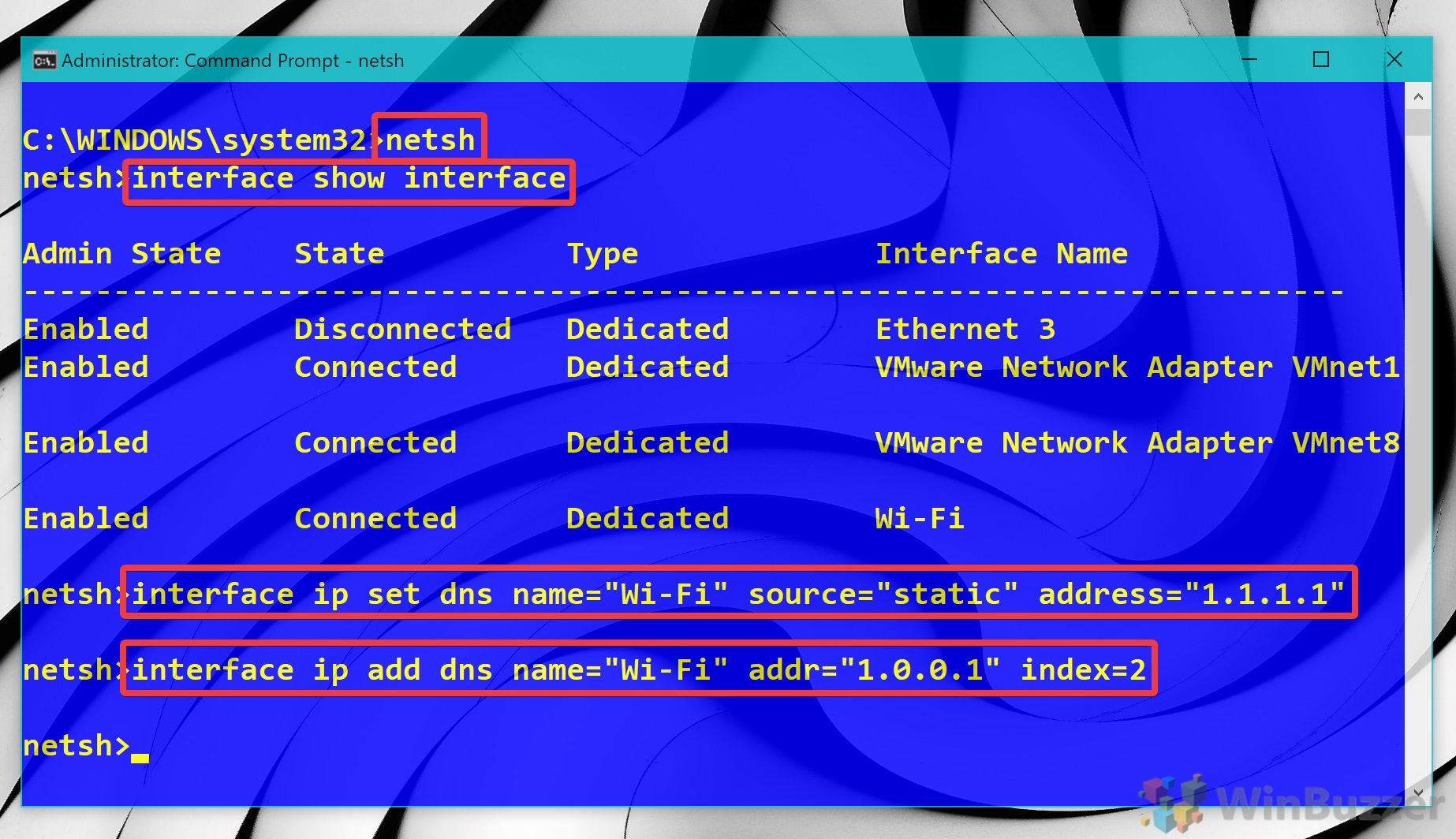
Thank you for post-obit this Windows 10 DNS tutorial. If you're interested check out our guide to enabling or disabling network adapters, or follow our network reset tutorial if your DNS alter didn't become well.
Source: https://winbuzzer.com/2021/04/24/how-to-change-your-dns-server-in-windows-10-and-why-youd-want-to-xcxwbt/
Posted by: thompsonstions.blogspot.com

0 Response to "Windows 10 How To Change Dns"
Post a Comment